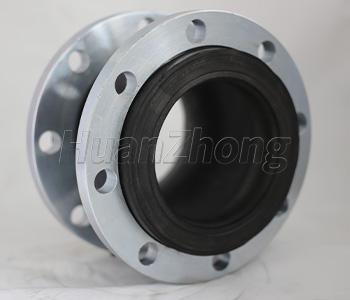What is the impact of standard flanges of flexure rubber joints on pipeline safety.
What is the impact of standard flanges of flexure rubber joints on pipeline safety.
Standard flanges are commonly used in flexure rubber joints to connect pipelines. These flanges play a critical role in ensuring the safety of the pipeline system. In this article, we will explore the impact of standard flanges on pipeline safety and why they are essential components.
Secure Connection: Standard flanges provide a secure and reliable connection between the flexure rubber joints and the pipeline. They are designed to join two pipe ends together, creating a tightly sealed connection. This prevents leaks, reduces the risk of fluid loss, and maintains the integrity of the pipeline system. A secure connection is vital for pipeline safety, as it minimizes the chances of leaks that can lead to environmental hazards and property damage.
Pressure Resistance: Standard flanges are designed to withstand the pressure exerted by the fluid flowing through the pipeline. They are typically made from durable materials such as carbon steel or stainless steel, which can handle high-pressure environments. The ability of standard flanges to resist pressure is crucial for pipeline safety, as it prevents failures and ruptures that can occur due to excessive internal pressure.
Flexibility and Movement: Flexure rubber joints are designed to compensate for thermal expansion, vibration, and misalignment in the pipeline system. Standard flanges play a vital role in facilitating this flexibility and movement. They allow the rubber joint to flex and adapt to changes in the pipeline, ensuring that the system remains intact and unharmed. Without standard flanges, the flexure rubber joint would not be able to function correctly, leading to potential stress on the pipeline and increased risk of failure.
Corrosion Resistance: Standard flanges are often coated or made from corrosion-resistant materials to protect against the corrosive effects of the fluid being transported. Corrosion can weaken the pipeline and compromise its integrity, leading to safety hazards. Standard flanges with corrosion-resistant properties extend the lifespan of the pipeline by preventing corrosion-related failures and ensuring the safe transportation of fluids.
Ease of Maintenance: Standard flanges allow for easy disassembly and reassembly of the pipeline system, making maintenance and repairs more straightforward. In case of any damage or breakdown, the flexure rubber joint can be easily detached and replaced without needing to modify the entire pipeline. This convenience not only saves time and effort but also contributes to maintaining the safety and functionality of the pipeline system.
In conclusion, standard flanges are instrumental in ensuring the safety of pipelines fitted with flexure rubber joints. They provide a secure connection, resist pressure, facilitate flexibility, and protect against corrosion. The use of standard flanges helps prevent leaks, failures, and ruptures, promoting the overall safety and integrity of the pipeline system. Proper installation, adherence to industry standards, and regular maintenance of standard flanges are crucial to ensuring the long-term safety and efficiency of pipelines.
